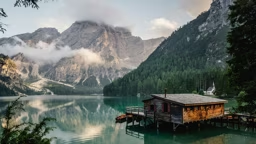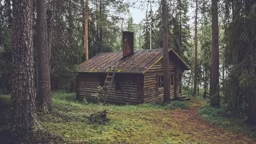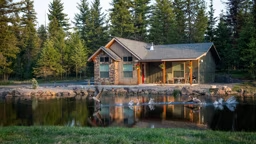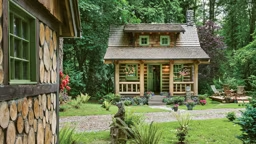
If you’re considering buying lakeshore property, you could be making one of the largest and most important investment decisions of your life. Learn all you can about your potential lake before you make an offer. Buying lakeshore property is not the same as buying residential property. There are many other major aspects to consider besides the house and garage and whether the property is consistent with your “Buyer Criteria.”
The quality of the lake and lake bottom and shoreline are as important as the quality of the structure. Houses can be remodeled, lots can be landscaped. But you can’t alter the lake, lake bottom or shoreline. Here’s a short checklist of things to look at before you buy.
The Lake Bottom
What’s the lake bottom like? Is it hard bottom, sand, rock, gravel, muck or weeds? Does the lake bottom slope gradually or are there steep drop-offs? This could be an important safety consideration if you have small children or grandchildren. The bottom also factors into the type of dock you’ll need.
The Lake
Most states provide excellent lake information via Web sites or charts and pamphlets. Look for how large the lake is, its depth, plus much more. A good, quick measure of the quality of a lake is to compare the ratio of lake acres to littoral acres (area less than 15 feet deep). For instance, if a lake has 434 acres and 202 littoral acres, more than half the lake is deeper than 15 feet and it would be a good overall multi-use lake.
It’s a good idea to get in a boat and check out the lake first-hand if possible. See what kind of cabins/ homes are on the lake and whether you’d be comfortable there.
Lake Use
How do you plan on using the lake? If you plan on swimming, make sure the lake frontage is deep enough with few weeds. If you want to just sit on the dock and relax, look for a lake that has minimal boat traffic. Will you be water-skiing or pulling the kids on cool water toys? Then you’ll want a lake of at least 150 acres and with a low ratio of littoral area.
Fishing
If you intend to fish, check on the quality of fishing. Are there special regulations in place, like catch-and-release only or size restrictions? What species of fish live in the lake? Is there winterkill?
Location On the Lake
Every lake lot has advantages and disadvantages depending on where they are located and your perspective. Will your dock be in the morning or afternoon sun? What is the elevation between the lake and the cabin site?? Will you need to add stairs or an incline lift? Can you see the lake from the house? Is the shoreline solid or is there any danger of erosion?
Lakeshore Building Restrictions
Minimum lakeshore building guidelines are set by the state, and most counties have additional guidelines and restrictions. These collective guidelines define things like setbacks from the lake and property lines, and where the well and septic systems must be located. If you plan on buying with the idea of expanding later, make sure that your expansion plans conform with lakeshore zoning guidelines.
Public Access to Lake
Does the lake have a public access? If it doesn’t, how will you get your water toys in and out of the water? If you are on a chain of lakes, it’s a good idea to make sure that the channels/waterways will accommodate your current boat.
Mike and Harriette Wock are founders of Paradise Real Estate, www.paradiserealestatemn.com, which specializes in lakefront cabin restorations.










